Succession to the Crown: King George IV
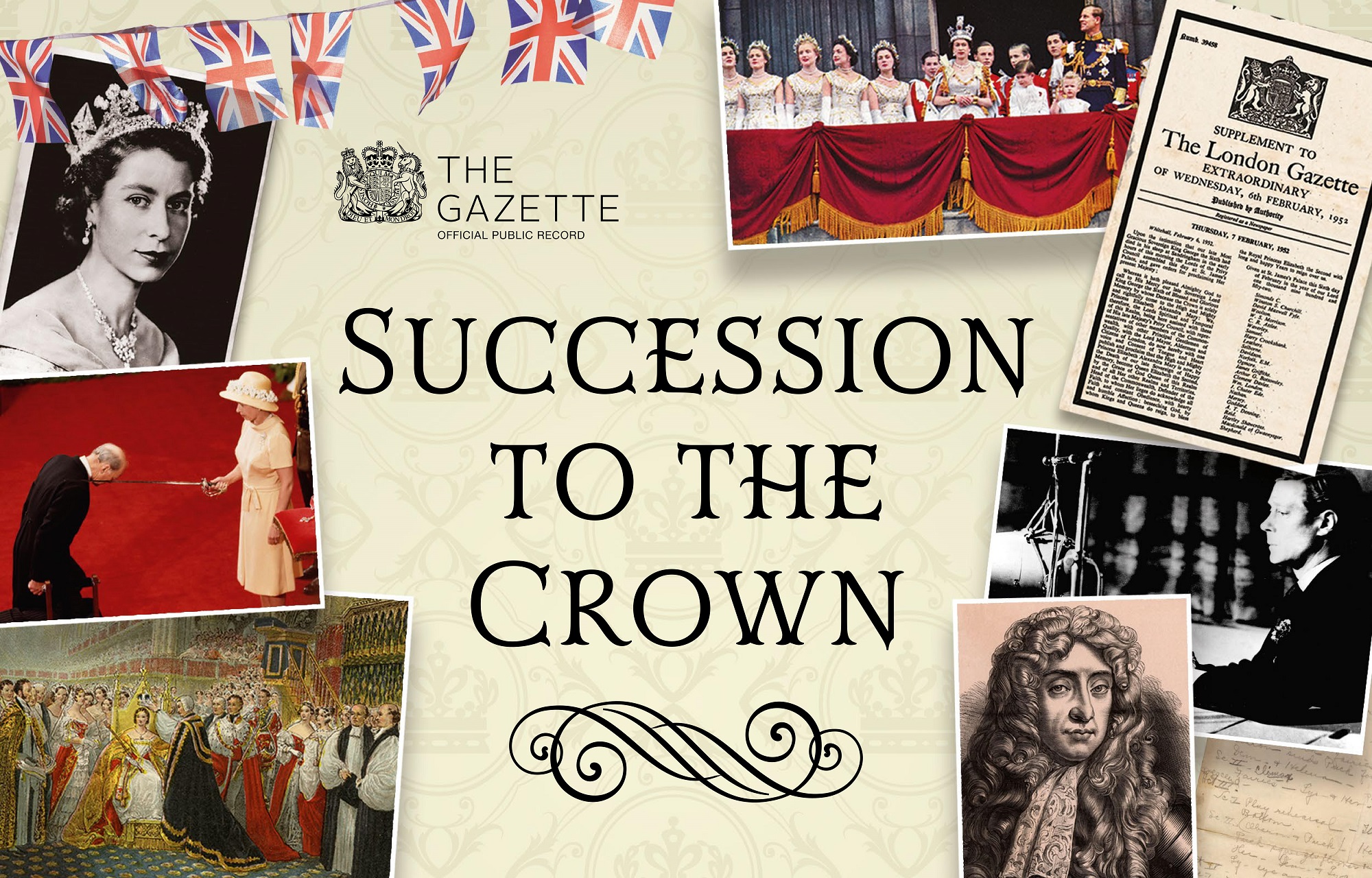
As the official public record since 1665, The Gazette has been recording successions to the Crown for over three centuries. As part of our ‘Succession to the Crown’ series, historian Russell Malloch looks through the archives at the accession and reign of King George IV, as described in The Gazette.
Chapters
Succession to the Crown paperback
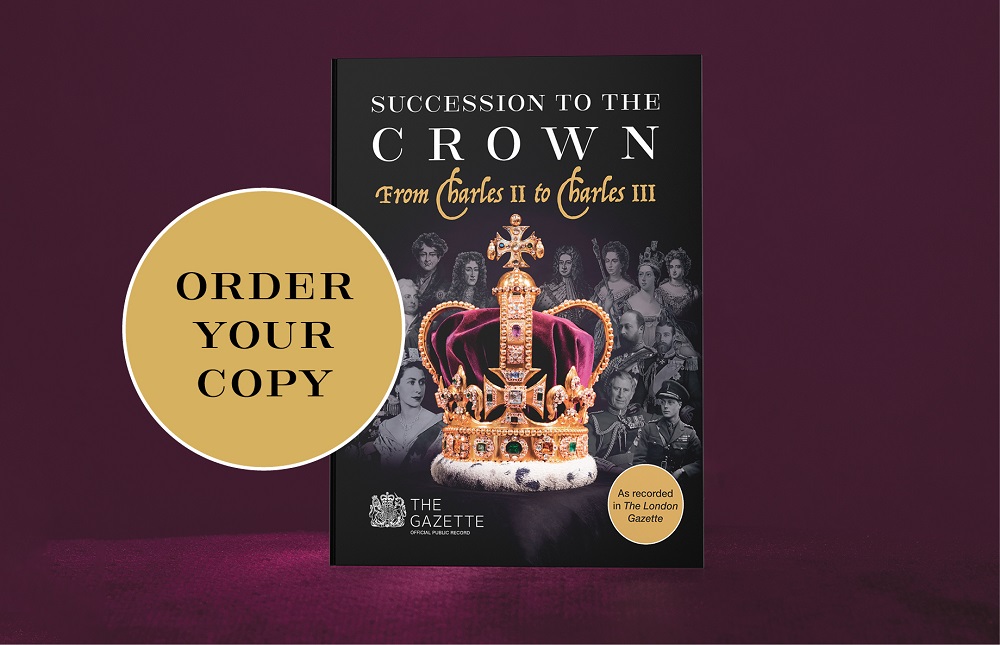
To celebrate the new king’s coronation, The Gazette’s Succession to the Crown series has been released in paperback.
Available to order now from the TSO Shop, the Succession to the Crown paperback explores the coronations, honours and emblems of the British monarchy, and includes an exclusive chapter on the accession of King Charles III.
Find out more in the link below.
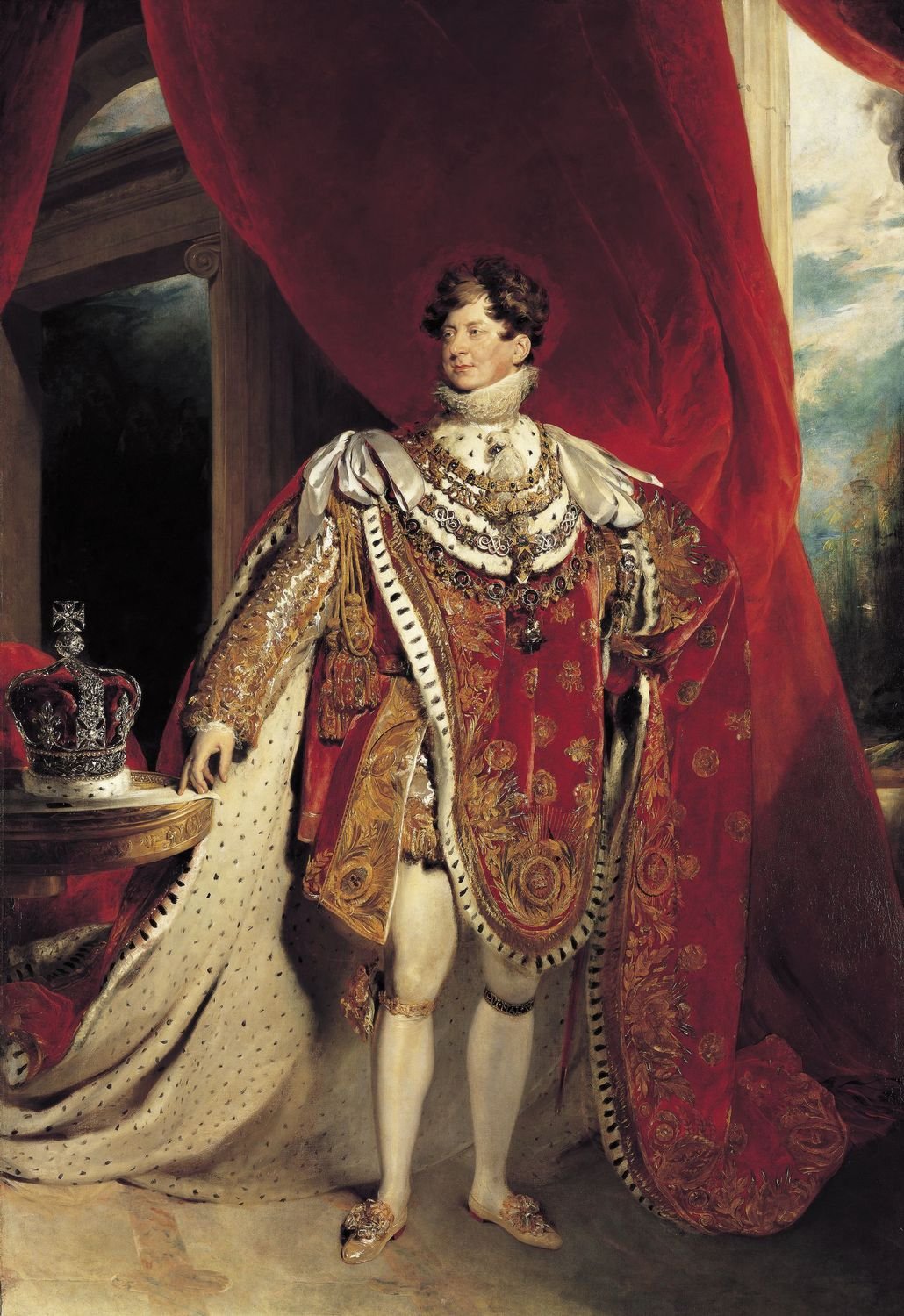
Accession Council
King George III expired at Windsor Castle on 29 January 1820 (Gazette issue 17558), an event that led to The London Gazette reporting the first of the three Accession Councils to be organised during the 19th century.
The council at which the Prince of Wales was transformed from regent into King George IV took place at Carlton House on 30 January (Gazette issue 17559). The familiar style of English ceremonial was adopted, and few changes were made to the central theme of proclaiming the sovereign’s name, which followed the titles as set out in the 1801 proclamation that was made under the great seal and in accordance with the first article of the union.
The King used his accession declaration to recall his administration of the government in his father’s name and acknowledge the support he received during what he described as an eventful time and most arduous circumstances. He avoided speaking about several matters that were favoured by his predecessors, such as his relationship with the church, and his interests in the Empire.
As usual, The Gazette published the names of those who subscribed the proclamation, including the prime minister, Lord Liverpool, who had been responsible for most of the changes that were made to the honours system during the regency.
Royal dominions
By the time the regency ended in 1820 the geographical extent of the King’s authority had moved well beyond the United Kingdom, but the Accession Council retained its British focus, and no reference was made to the personal union with the kingdom of Hanover, or to any of the Crown’s other possessions in Europe, Africa, Asia and the Americas.
The significance of the German connection was observed at the late King’s funeral in St George’s Chapel on 19 February 1820 (Gazette issue 17567), when the banners of Brunswick and Hanover were carried by senior army officers, and the crown of Hanover was borne by the member of the Hanoverian Chancery in London, who was also the secretary of the Guelphic Order.
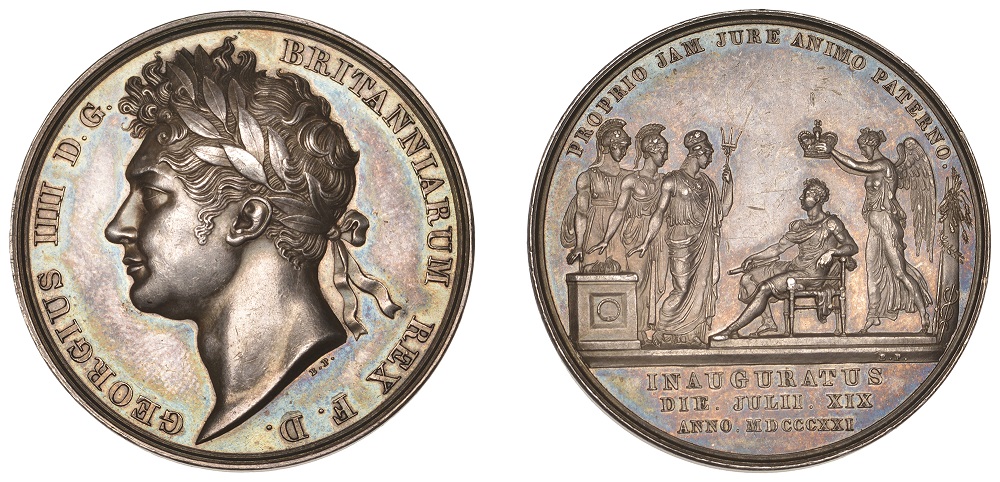
Delayed coronation
A novel development in the distribution of honours arose in May 1820 with the nomination of several members of the Order of the Bath. This was intended to recall the precedent of the Tudor and Stewart sovereigns who conferred an old form of knighthood of the Bath “in contemplation of their coronations [...] on divers of their loving subjects”.
The Bath announcement proved to be premature, for although the coronation was planned to take place on 1 August, the prospect of the King being crowned receded because of his public dispute with his wife Queen Caroline. The King’s decision to divorce his wife led to a proclamation in July 1820 to explain that the coronation had been adjourned “for divers weighty reasons”. Those weighty reasons led to proceedings being started in the House of Lords to examine the Queen’s conduct, and the revised date for the coronation was not gazetted until June 1821 (Gazette issue 17715).
The King finally received his regalia on 19 July 1821 (Gazette issue 17732), when the occasion was marked with a distribution of honours that included peerages and places for peers in the high orders of knighthood, while the ceremony was overshadowed by the treatment of the Queen who was barred from entering Westminster Abbey and died less than one month later (Gazette issue 17735).
Honours system
No significant additions were made to the honours system during the King’s personal reign, in contrast to the measures he approved as regent, including the restructuring of the Bath; the reform of the naval and military medals, and the institution of orders to promote the Crown’s interests in Hanover and the Mediterranean.
A few alterations were made, but they were of limited application, such as the extension of the Thistle to allow four knights to join the order on the occasion of the coronation, and an increase in the number of knights of St Patrick to enable appointments to be made to coincide with a royal visit to Dublin that was planned for after the coronation.
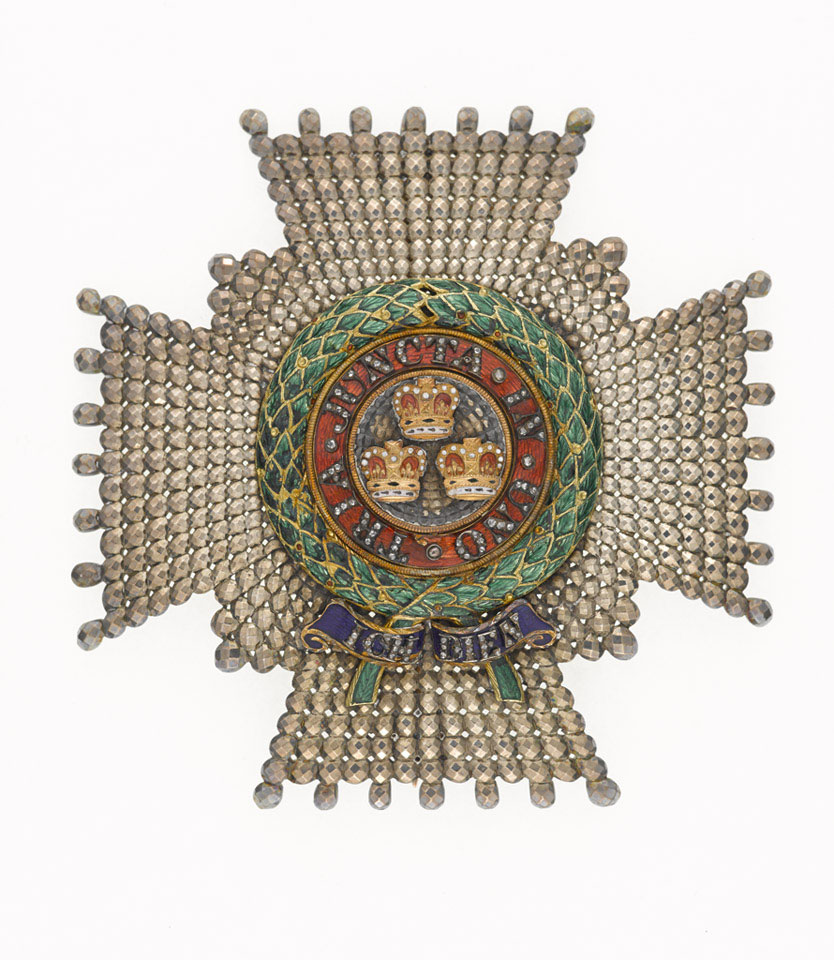
The royal authority continued to be delegated to deal with practical matters, while The Gazette provided more frequent reports about the sovereign taking an active role in presenting insignia, particularly to members of the Order of the Bath.
The lord lieutenant of Ireland retained the responsibility for dealing with the affairs of the Order of St Patrick, as well as managing the grant of other Irish honours from his base in Dublin. At the same time, the Guelphic Order operated from its dual homes in London and Hanover, and the King’s local representatives did most of the work relating to the Order of St Michael and St George from their offices in the Mediterranean.
Absent the Realm
King George left the realm only once. His journey to Hanover, Waterloo and other European destinations came only two months after the coronation, and this led to a Privy Council at Carlton House on 17 September 1821, which the first to be held since 1755 at which the sovereign declared his intention of going out of the realm. The King nominated several lords justices (Gazette issue 17750), with the candidates being drawn from the usual sources. The list began with the King’s brother and likely heir, the Duke of York, who was joined by the prime minister, the archbishop of Canterbury, the Duke of Wellington, and more than a dozen members of the Liverpool government.
The Gazette reported the King’s yacht setting sail for Calais on 25 September, and some of the actions the justices took while he was away, such as granting permission to Dame Ann Beevor, a baronet’s widow, to revert to her original surname, and licensing John Austin, lately the military governor in the Algarve, to wear the insignia of the Order of the Tower and Sword in testimony of his services with the Portuguese army (Gazette issue 17754).
The King returned to London on 8 November 1821 (Gazette issue 17763), when the justices acted for the last time as custodians of the royal authority. The designation “lord justice” appeared in legislation that was passed after 1821 to manage the royal powers, but no justices were ever appointed before the style “lord justice” came to be associated with the title of the judges of the Court of Appeal in Chancery who were first nominated in October 1851 (Gazette issue 21252). The style “counsellor of state” was then adopted when the royal authority began to be delegated at the start of the 20th century.

Heir presumptive
Some of the family measures that were taken to secure the Hanoverian succession after the death of Princess Charlotte started to unravel during the course of George IV’s reign.
The heir presumptive when King George came to the throne in January 1820 was his brother Frederick, Duke of York, the great master of the Order of the Bath and commander-in-chief of the British army, whose career had been upset by accusations of improper conduct relating to the sale of commissions.
The Duchess of York died without any children in August 1820 and Frederick did not remarry, and so when he died in January 1827 (Gazette issue 18321) the fate of the crown came to rest on the King’s surviving brothers and/or the children of one of those royal dukes, in the sequence of: William, Duke of Clarence; Edward of Kent (who had died shortly before his father in 1820); Ernest of Cumberland, Augustus of Sussex; and Adolphus of Cambridge.
The Gazette reported the birth of the Duke of Clarence’s daughter in December 1820, but Princess Elizabeth of Clarence died in March 1821 (Gazette issue 17686), and William had no further children by his wife Adelaide, so that when King George died in June 1830 (Gazette issue 18696) his niece, the only daughter of the late Duke of Kent, became the focus of attention as regards the destination of the royal authority, and the heir presumptive to the crown of the United Kingdom, although not to the crown of Hanover.
About the author
Russell Malloch is a member of the Orders and Medals Research Society and an authority on British honours.
Let us know what you think of this article by getting in touch. All feedback is welcome.
See also
Gazette Firsts: The history of The Gazette and royal coronations
The Demise of Queen Elizabeth II and Accession of King Charles III
Queen Elizabeth II - In Memoriam
Images (in order of appearance)
The Gazette
Royal Collection Trust / © His Majesty King Charles III 2022
Noonans of Mayfair
Royal Collection Trust / © His Majesty King Charles III 2022
Publication date: 2 December 2022
Any opinion expressed in this article is that of the author and the author alone, and does not necessarily represent that of The Gazette.
